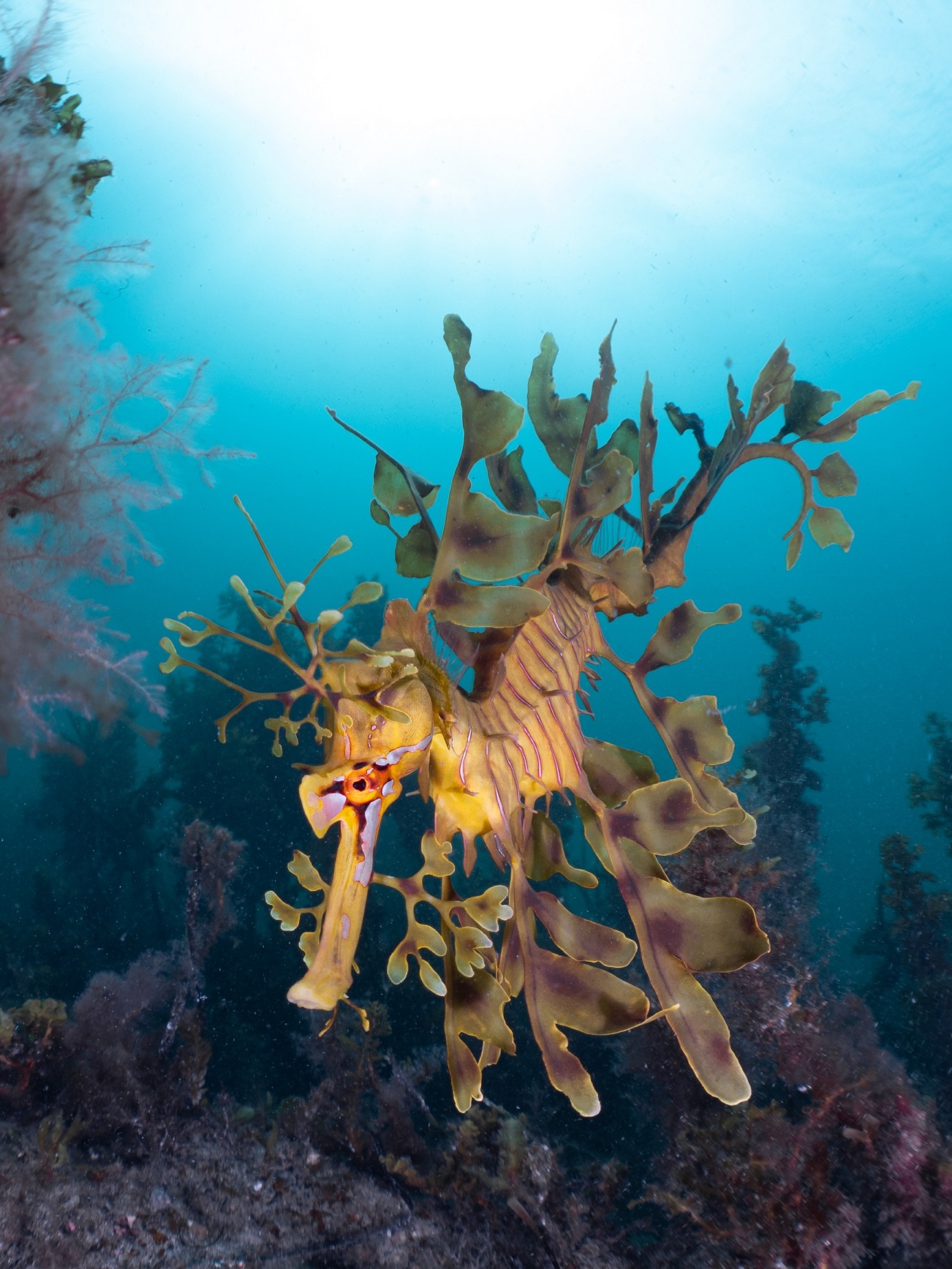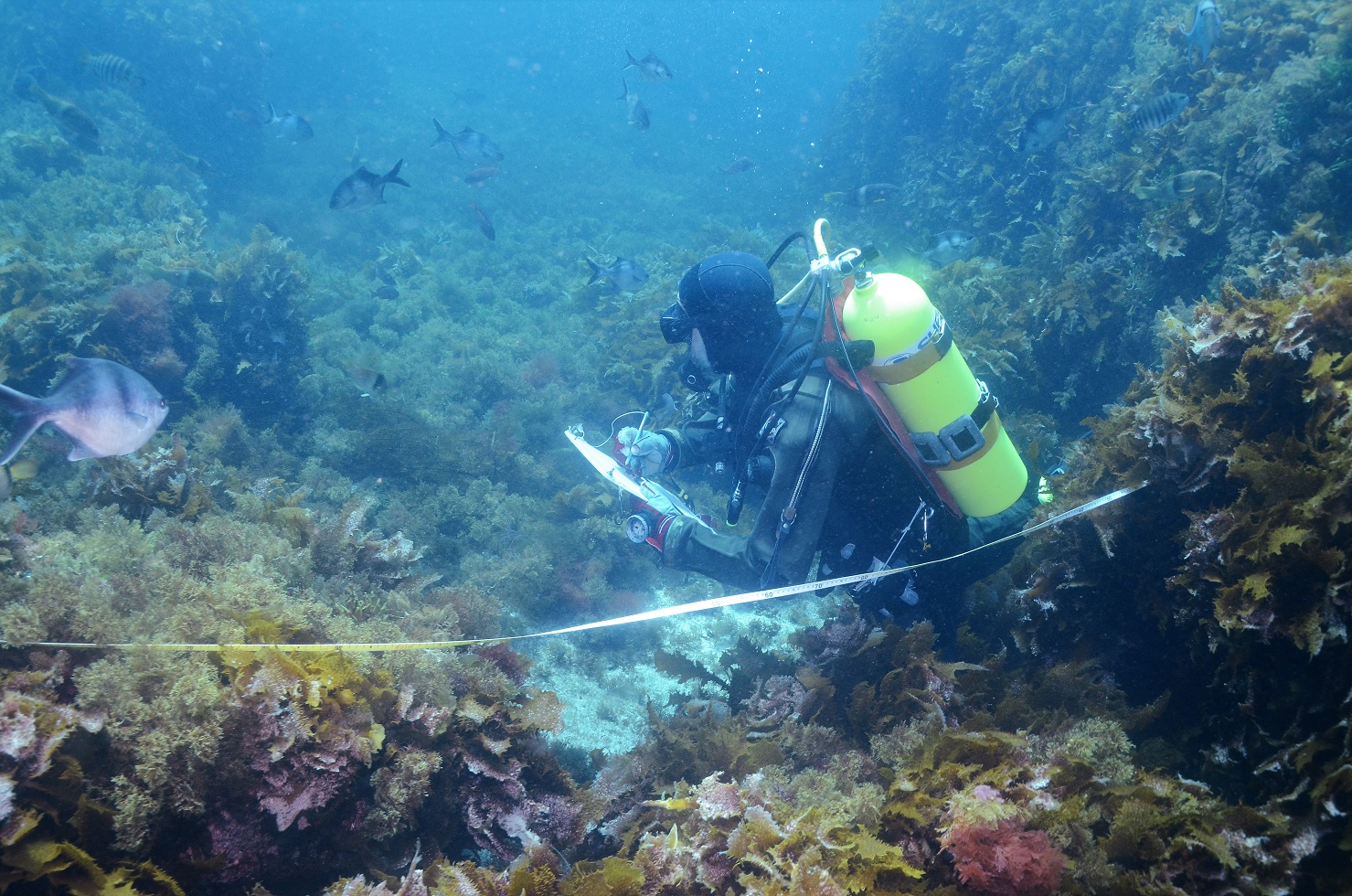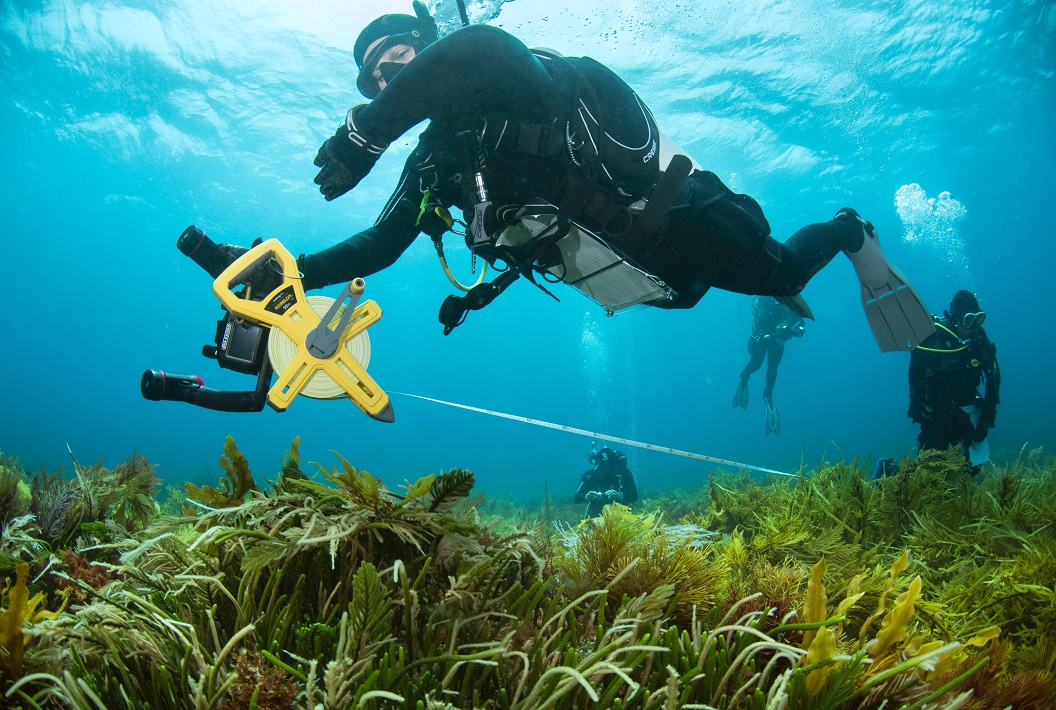The Great Barrier Reef is one of the seven wonders of the natural world. But now an equally stunning and important reef that wraps around southern Australia is in the spotlight, thanks to a $2 million grant from The Ian Potter Foundation for a project to protect its unique marine life.
The Great Southern Reef extends 6,000km from NSW to WA, including the area south of Tasmania. It is home to some of our favourite sea creatures – the leafy sea dragon, blue groper, black cowry and other iconic species.
For over two-thirds of marine species found on the Great Southern Reef, this is their only home – but it sits on a climate-change hotspot and its precious ecosystem is under threat.

As the largest research group currently investigating the Great Southern Reef, the Institute for Marine and Antarctic Studies (IMAS) Coastal Ecosystem Team have witnessed the human and environmental impacts on the reef over time and know that urgent action is needed.
The team has coordinated an ambitious plan to bring together all the research and existing collaborations across Australia’s universities and management authorities into a single collaborative project – a project that will gather collective knowledge and often overlapping data, coordinate research activities across the Great Southern Reef, and have a strong focus on communicating the science.
“Our vision is to create a shared understanding of the threats and management options needed to protect and restore the reef’s temperate marine life, and we are exceptionally grateful for The Ian Potter Foundation’s support to make this vision a reality,” said IMAS marine ecologist, Professor Graham Edgar, who will lead the initiative.
“Perhaps the greatest indication of this project’s importance is that, without exception, every group invited to collaborate on this project quickly agreed."
“They know firsthand the scale of the problems affecting the Great Southern Reef, and saw the project’s critical role in protecting this essential environment for our children.”

University of Tasmania Vice-Chancellor, Professor Rufus Black said the University of Tasmania was proud to be part of bringing the Great Southern Reef into focus.
“This project will build public expectations for protecting our temperate ecosystems in the face of a rapidly changing climate – opening new avenues for changed behaviour and providing new ways to improve coastal management,” Prof Rufus Black said.
“Ambitious projects like this can achieve more than any single organisation working alone, and we sincerely thank The Ian Potter Foundation for this significant philanthropic grant to support this important initiative.”

Fast facts:
- The IMAS Centre for Ecology and Biodiversity’s Coastal Ecosystem Team will manage the five-year project, with the support of the UTAS Centre for Marine Socioecology.
- Project partners include IMAS E&B Coastal Ecosystem Team; University of Tasmania - Centre for Marine Socioecology; University of New South Wales; Deakin University; University of Adelaide; University of Western Australia; Monash University; Reef Life Survey Foundation; Great Southern Reef Foundation; NSW Department of Primary Industries; WA Department of Biodiversity, Conservation and Attractions; SA Department for Environment & Water; Parks Victoria; Parks Australia; and the National Environmental Science Program (NESP) Marine Hub.
- The Ian Potter Foundation is one of Australia’s major philanthropic foundations. The Foundation makes grants nationally to support charitable organisations working to benefit the community across a wide range of sectors including the arts, medical research, public health research, early childhood development, community wellbeing and environmental science. The Ian Potter Foundation aims to support and promote a fair, healthy, sustainable and vibrant Australia.
Images (from top):
- The Great Southern Reef, eastern Tasmania © Graham Edgar
- Leafy sea dragon © Matt Testoni Photography
- A census of marine life in the Great Southern Reef, South Australia © Graham Edgar
- Divers conduct Reef Life Surveys in Port Phillip Bay, Victoria ©Antonia Cooper



